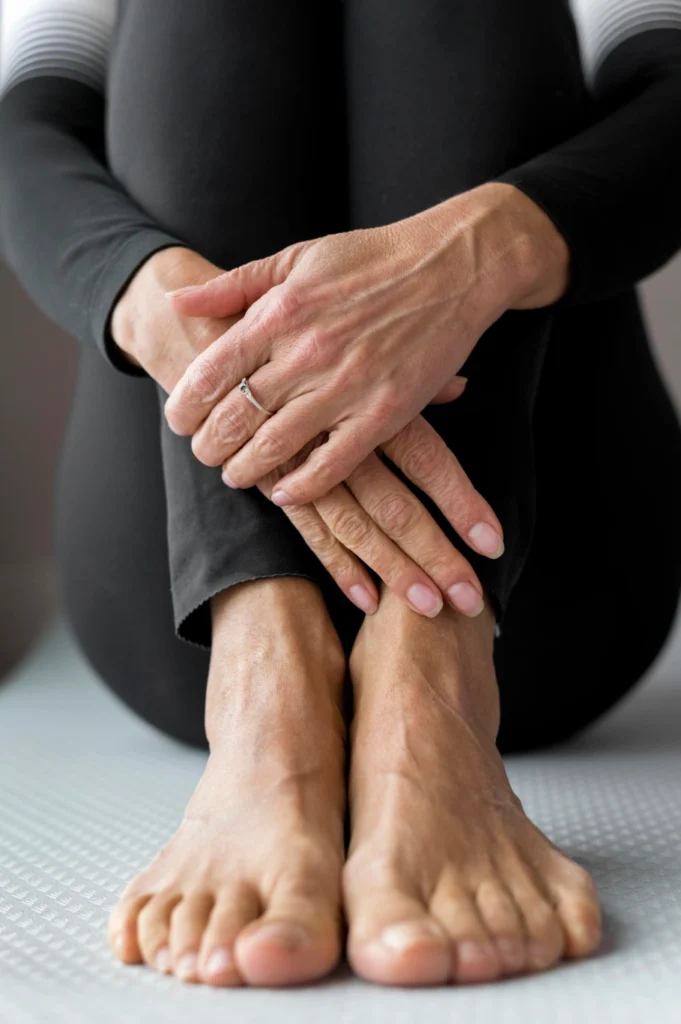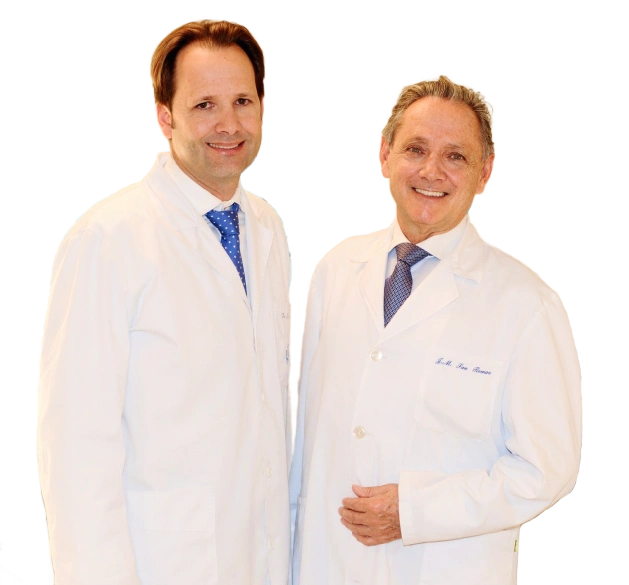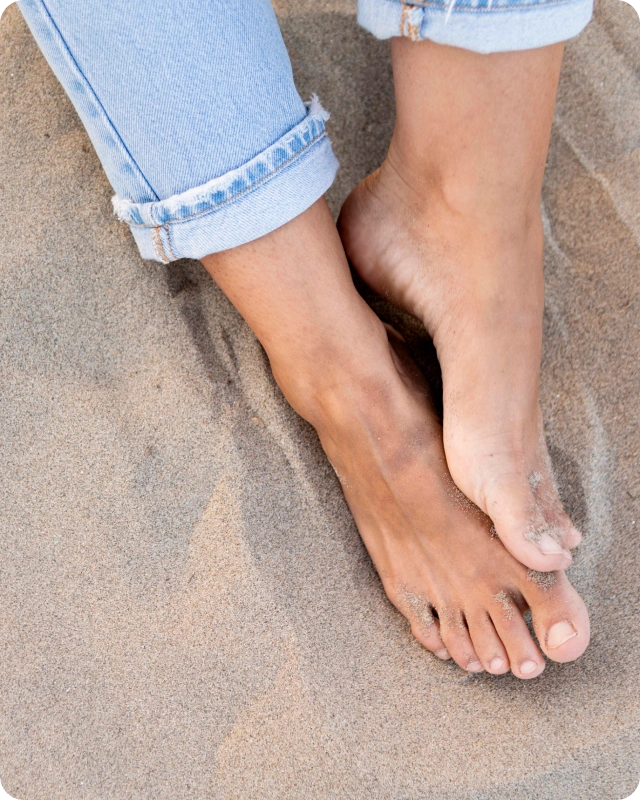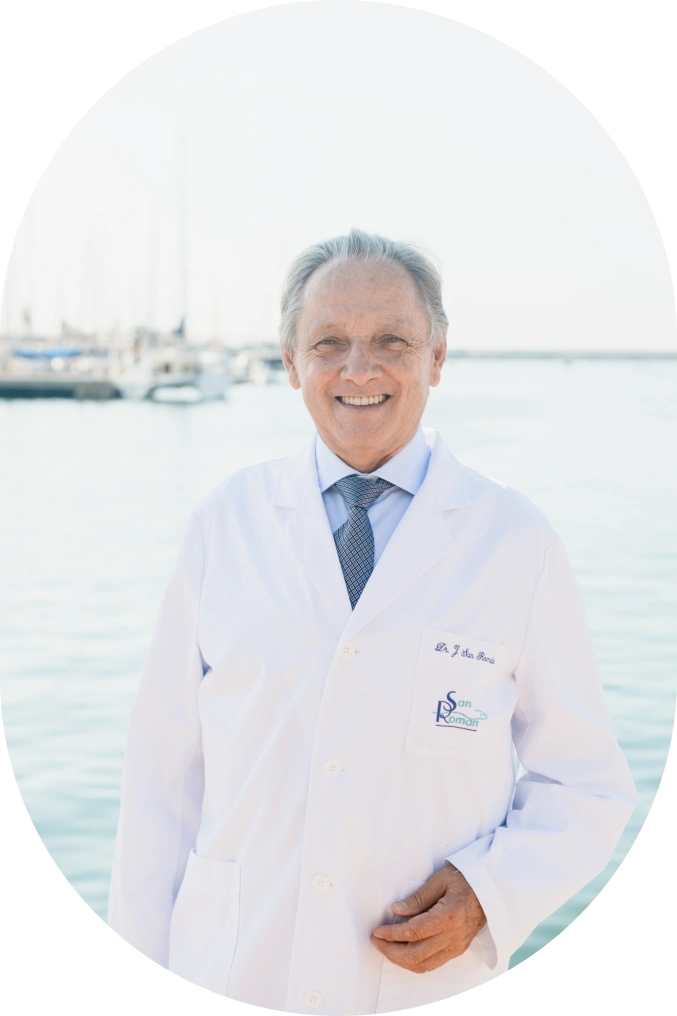If you are reading this, you are probably already well aware of the discomfort caused by a bunion: persistent pain, difficulty in putting on shoes and limitations in your daily activities. Bunion surgery is designed for:
- Eliminate chronic pain that does not improve with insoles, medication or changes in footwear.
- Restore alignment of the big toe, preventing the deformity from progressing further and compromising other toes.
- Improve function and quality of life: return to walking long distances, playing sports or wearing the footwear of your choice without restrictions.
- Prevent long-term complications such as osteoarthritis, recurrent bursitis and painful corns.
- Optimize foot biomechanics, reducing overloads in neighboring joints (ankle, knee, hip).
In short, the intervention is not only an aesthetic issue; it is the most effective tool to recover your autonomy and prevent further damage in the future.
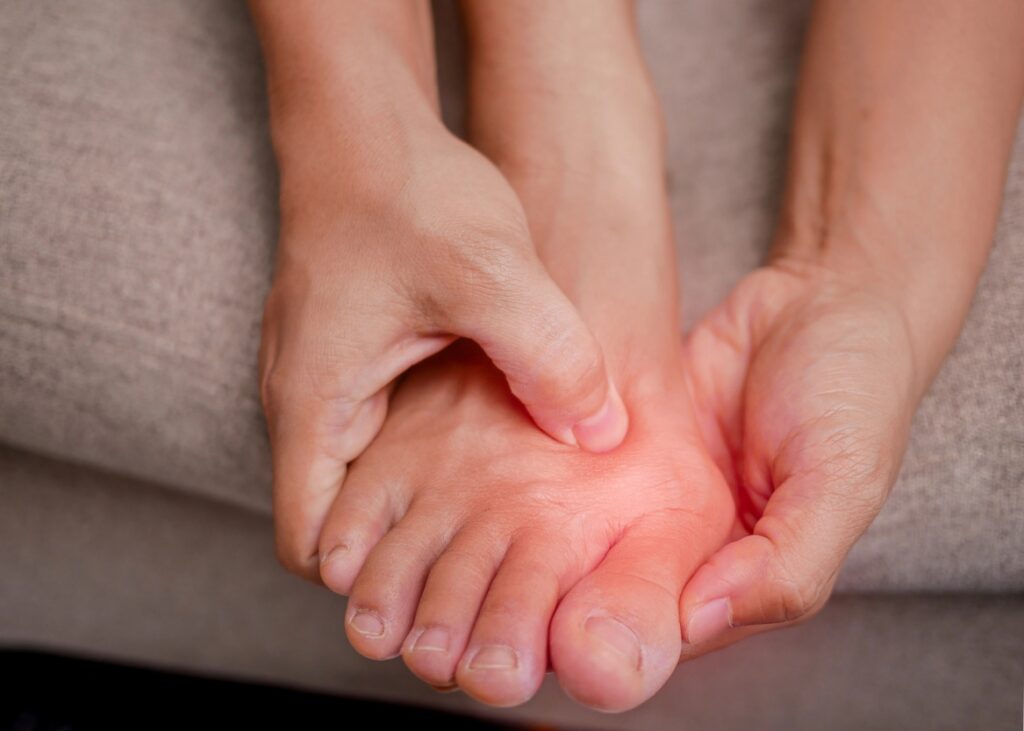
| Situation | Recommendation |
|---|---|
| Chronic pain that limits daily activities | Operation advised if conservative treatment has failed |
| Rapidly progressive deformity | Early surgical evaluation to avoid irreversible joint damage |
| Associated complications (bursitis, corns, calluses, claw toes) | Surgical correction to prevent skin lesions and overloads |
| Inability to wear regular shoes | High indication to improve quality of life |

Specialist in Percutaneous Foot Surgery
Founder and Medical Director
Based on verified patient feedback
| Phase | Details | Main goal |
|---|---|---|
| SEM -2 → 0 | Medical history, blood work, radiological study in load and 3D scan of the forefoot. | Optimize risk variables and set the surgical strategy. |
| DAY 0 | Regional anesthesia + sedation; surgery 45-90 min; functional dressing and immediate loading with rigid shoe. | Outpatient discharge (97% of cases). |
| SEM 1-2 | Relative rest, cryotherapy, standard analgesics, control teleconsultation. | Maintain pain < 2/10 in VAS. |
| SEM 3-6 | Physiotherapy: lymphatic drainage, MLS® laser and passive mobilization. | Restore 80% of joint range. |
| MONTH 2-3 | Wide sports shoes, return to office work and driving. | Walk 5-6 consecutive km without pain. |
| MONTH 4-6 | Start running, paddle tennis or gentle hiking under supervision. | Full physical activity and medical discharge. |

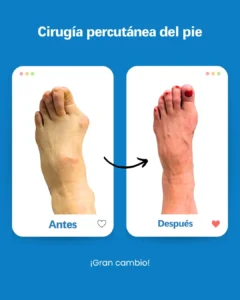
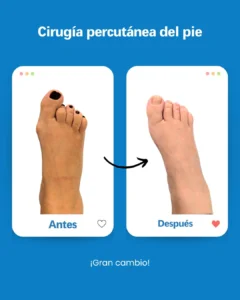
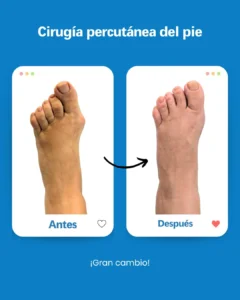
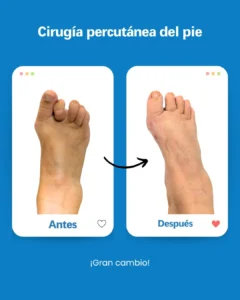

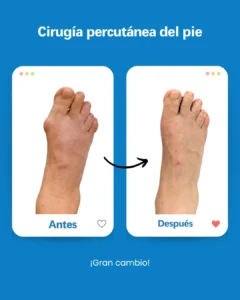
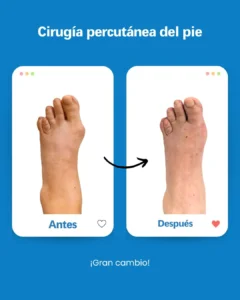
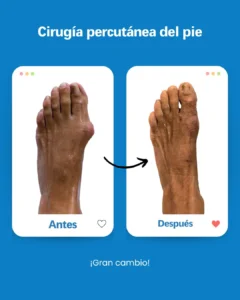
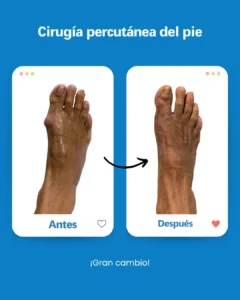
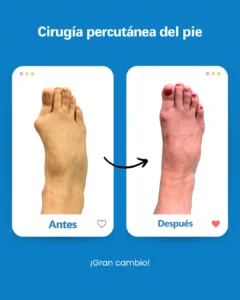
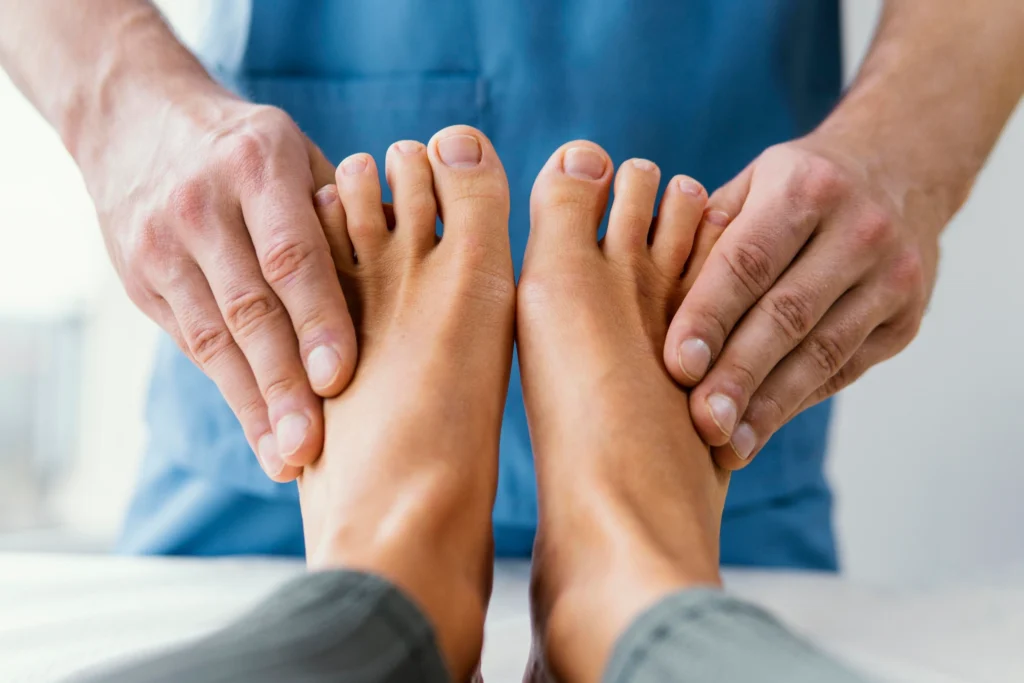
| Potential risk | Prevention/solution at Clínica San Román |
|---|---|
| Infection (< 1 %) | Sterile technique, antibiotic prophylaxis, protocolized cures. |
| Persistent pain | Multimodal pain management, low power laser and early physiotherapy. |
| Joint stiffness | Active exercises from the 1stweek and specialized manual therapy. |
| Nerve injury (tingling) | Minimal incisions and intraoperative anatomical mapping. |
| Consolidation delay | Metabolic control (vitamin D, blood glucose) and, if necessary, magnetotherapy. |
The key to success lies in an intensive but progressive physiotherapy plan. Our department is equipped with state-of-the-art technologies:
- Sequential pressure therapy to improve venous return and reduce edema.
- Neuromuscular electrostimulation aimed at maintaining the tone of the foot intrinsics.
- Baropodometry platform where we reeducate the footprint and distribute the metatarsal load.
- Myofascial manual therapy that releases adhesions and improves dorsal flexion of the first radius.
88% of our patients are teleworking before the third week and 72% are driving before day 40, thanks to the MIS + ambulatory functional bandaging combination.
